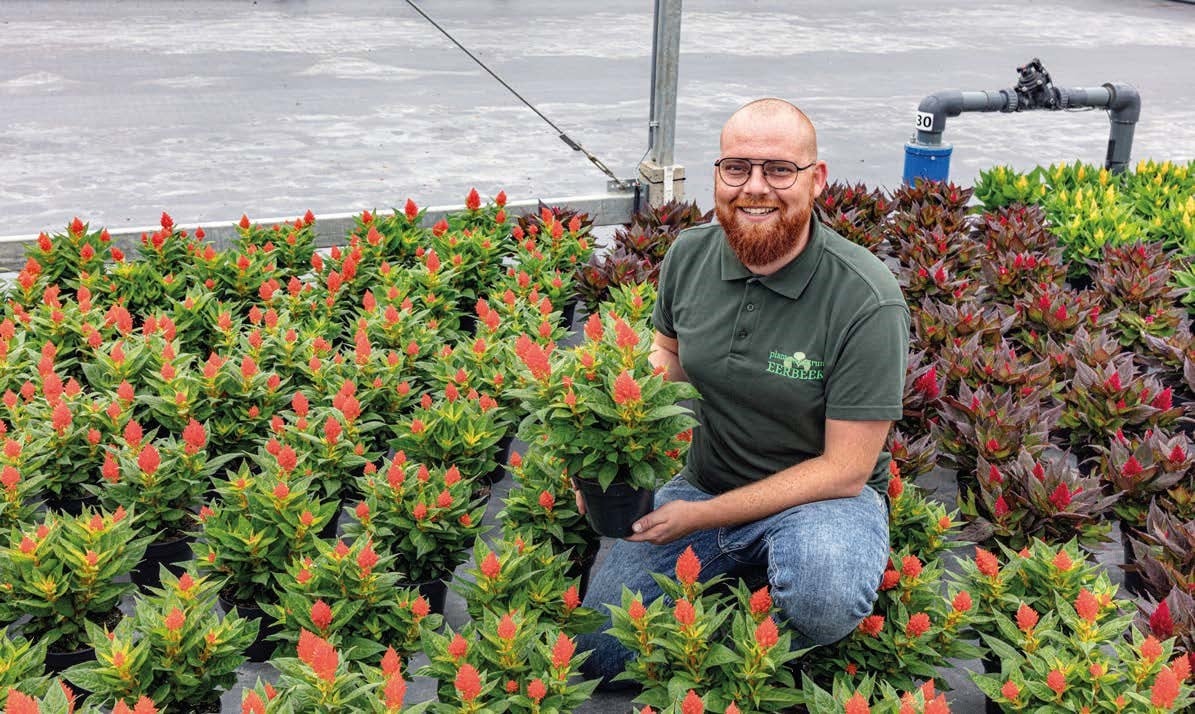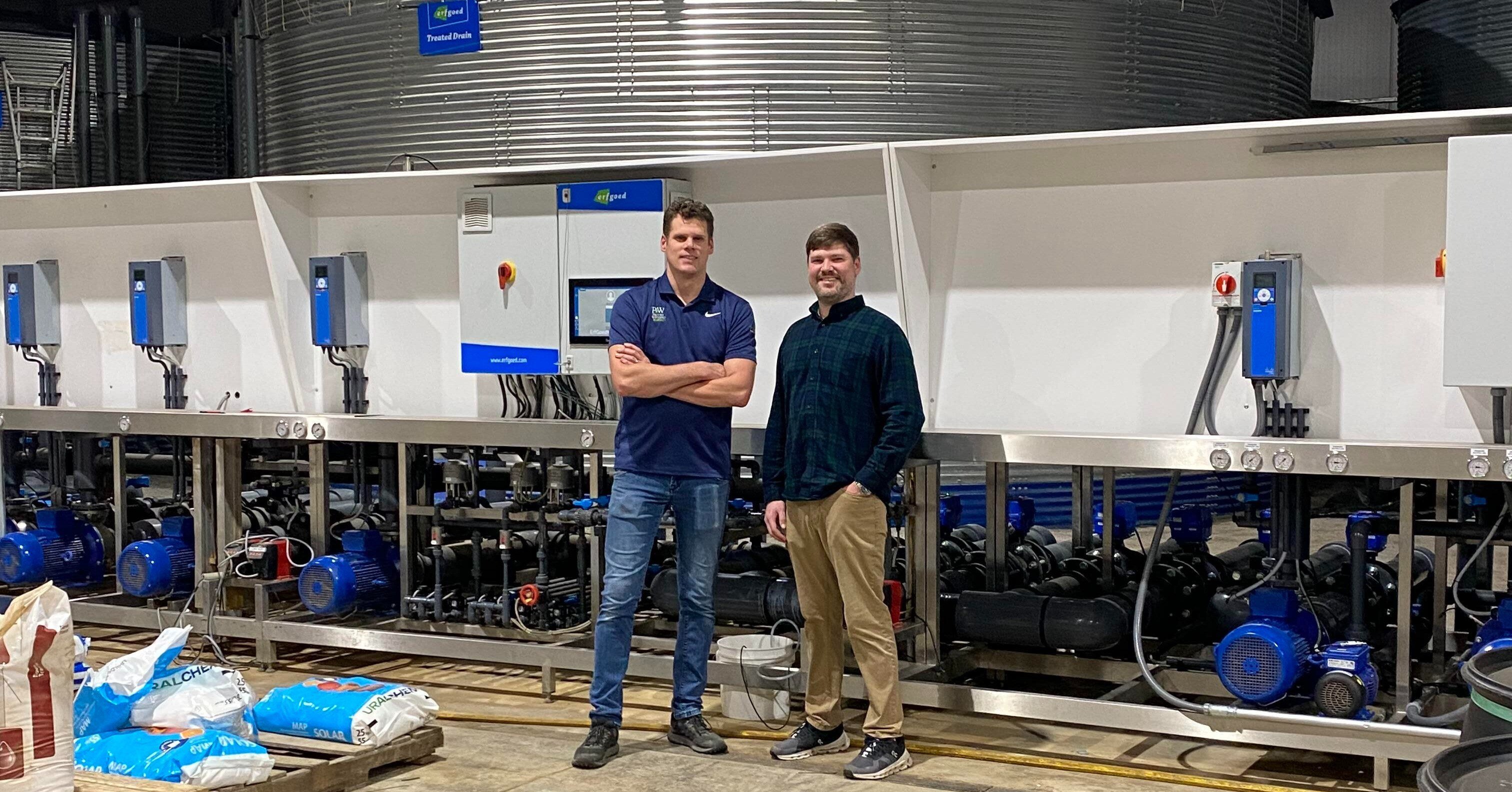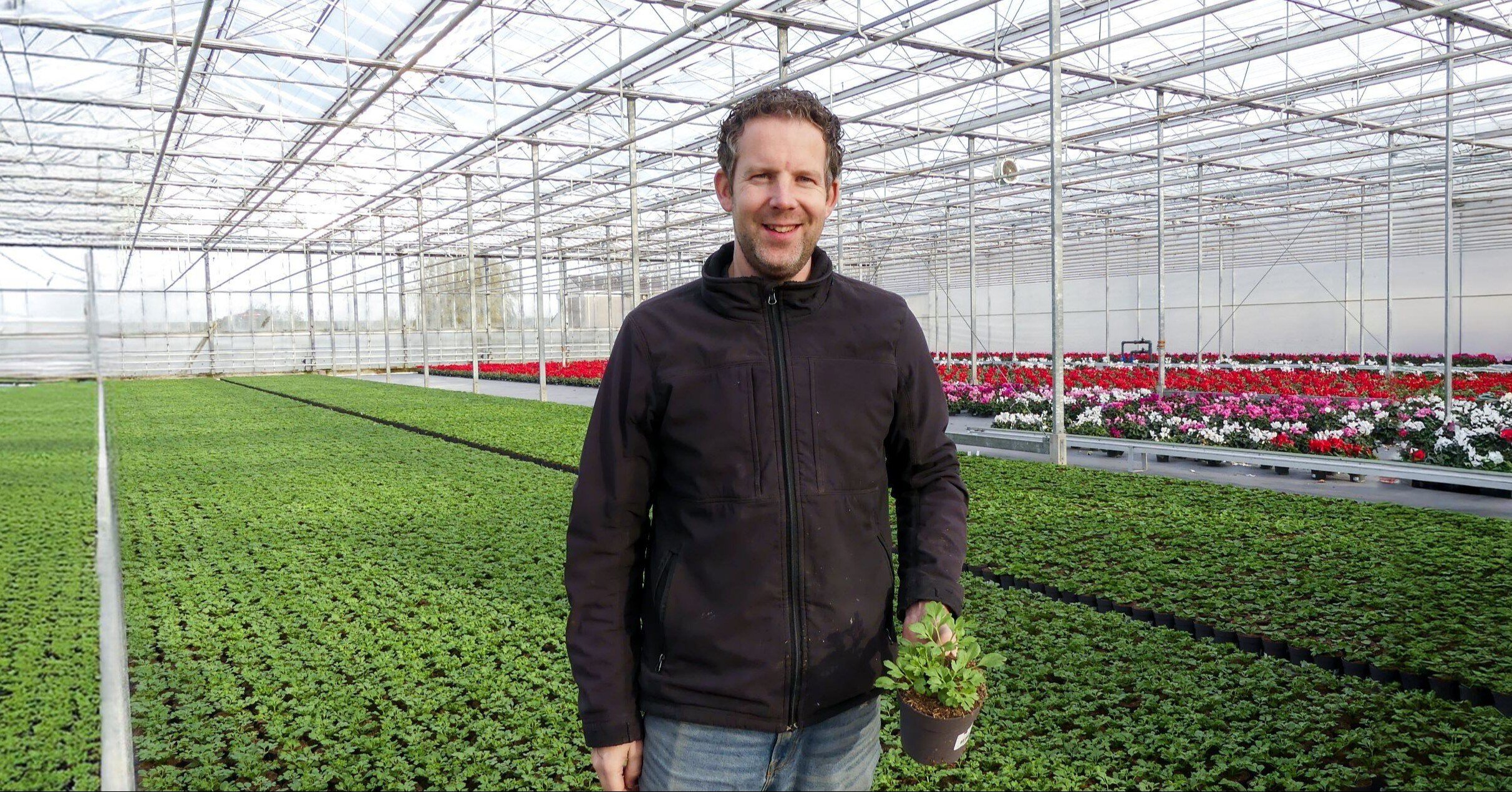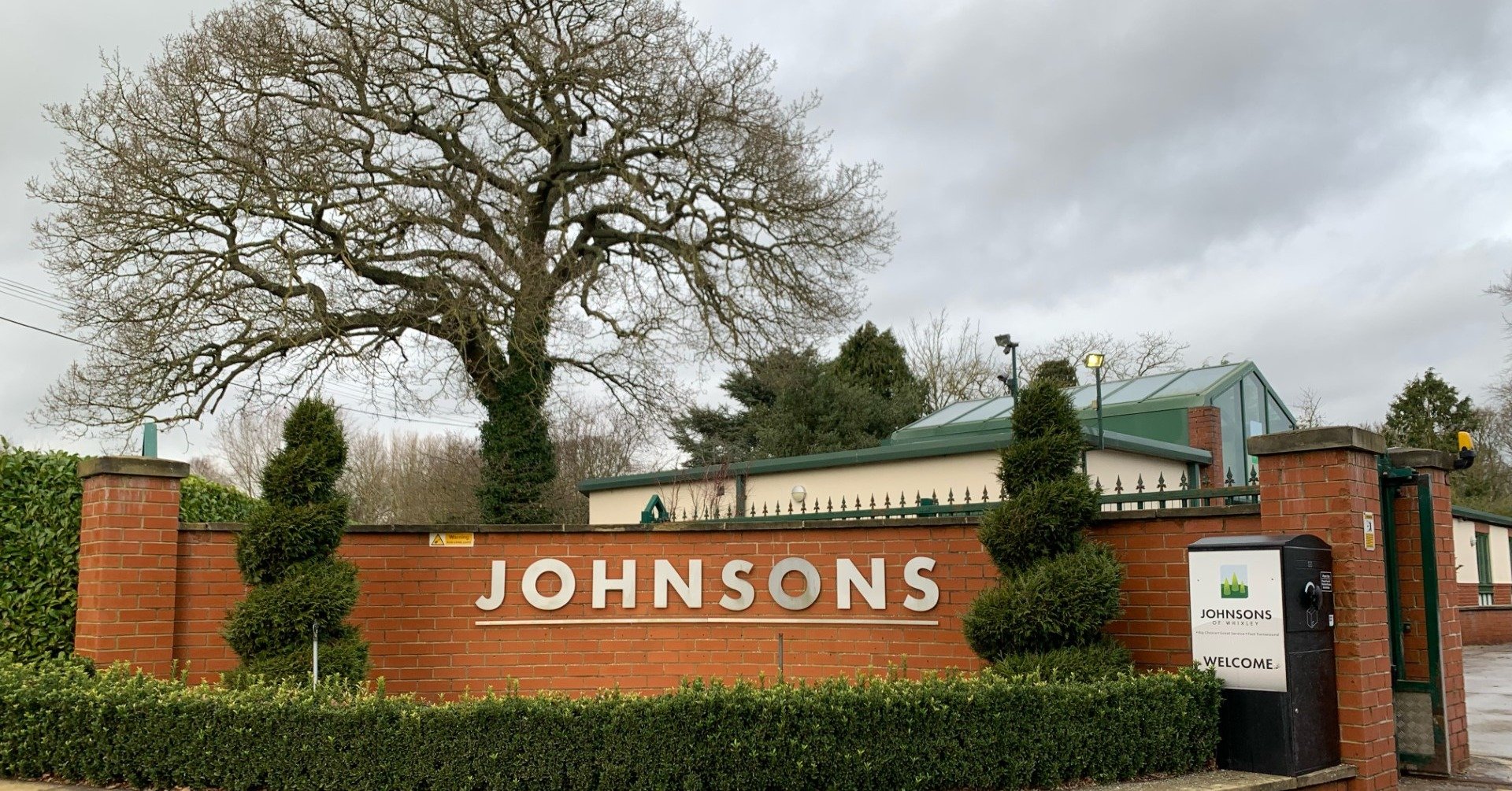- Prefer direct contact? +31 (0)79 593 38 00
- Language: English
- Home
- Referenties
- “We really should have done this ten years ago”
“We really should have done this ten years ago”

“We really should have done this ten years ago”
Dec 9, 2021 11:21:21 AM
A modest sign points the way bet-ween two houses to Eerbeek Plant Centre. The white stucco façade of the premises, with its high windows and green lamps, is reminiscent of an at-mospheric, listed building, although it was only built a few years ago. Bedding plants have been grown in the complex of glass houses behind the façade for the last twenty-five years. Before then, the glass houses were full of lettuce and cucumber. The Eerbeek family have been growing millions of garden plants since 1996.
Dick Eerbeek (26) walks out of his office with a broad smile to show the glass houses. Together with his father Jan, mother Gerrie and brother Jan-Dirk (22), he is the driving force behind this lively nursery. Dick briefly steps aside as a Trike fork-lift truck passes by, loaded with nearly 500 pots of pansies in its adjustable grippers. The ope-rator manoeuvres the machine skilfully over the ErfGoedFloor to set out the pansies. At the back of the glass house a potting machine is running at full speed to fill a new load of pots with tiny pansy plants. “For us, August is a period of transition between the summer bedding plants and autumn plants,” explains Dick. “At this time of year we position around 5000 pansies on the floors per hour.”
The last word in quality
In the near future the glass houses will once again be filled with a wide range of colours. And not very long after that, the plants will be on their way to customers on the home market and abroad. Many of the plants go to large garden cen-tres. “We also supply a large player on the German market. They demand only the best quality plants and I’m proud to say that they can find them here. The buyer from the company in question recently paid us a visit, bringing two hundred photos.
He made rows of three photos of each sort of plant. The differences were easy to see: the plants that looked best - the right colour, with pristine leaves and full of buds - all of them came from us. We called our workforce together so that they could see, too. That was a special moment, I have to say. Without doubt, I can say that the floor that we grow on makes a significant contribution to that level of quality and the success we’ve achieved. That has a positive impact on the whole chain.”
Garden presentation
Eerbeek Plant Centre doesn’t just supply large wholesale customers; in spring, retail customers can also seek out plants for their gardens. Dick: “In terms of sales, that accounts for very little, but we do like to sell our plants to private garden enthusiasts, too. Ultimately, whether or not we supply them directly or via garden centres: indi-vidual customers are going to have pleasure from our plants for a long time. We’re always curious as to how our plants ‘perform’. Sometimes custo-mers come back after a period of time to show us photos of plants in their garden. And when I cycle home from work, I find myself passing all sorts of gardens where our plants are on display in flower beds or hanging baskets. At times like that, I real-ly get a kick out of what I do.”
Potted plants
Dick has now reached the back of the glass hou-ses. “We waited quite some time before switching to an ErfGoedFloor in this, the last section of the nursery. We always used to have potted plants there, in big hanging pots. They were all irrigated using a dripper, and we thought that it would be difficult to replicate on an ErfGoedFloor. But we can now cultivate them on the ground, due to the fact that the floor has been laid out in such a way that the water can come up higher thanks to the ebb-and-flow system. That works perfectly: so much so, in fact, that we should’ve done it ten years ago.
Best cultivation floor
Dick never wants to go back to the old cultivation floor. “Plants hate growing on a surface where algae can develop, having ‘green feet’, so to speak. We wanted to change that, and also do some-thing about differences in plant quality: ‘unequal cultivation’. There had always been bits of the cultivation surface where water pooled and stood, whereas other parts of the surface had too little moisture. Since we’ve had the ErfGoedFloor on which to grow our plants we’ve noticed an impro-vement in quality and nice, even cultivation. If we were ever to build new premises, we wouldn’t have to think twice about which floor to use. We’-re convinced that this is the best cultivation floor that you could think up.”




